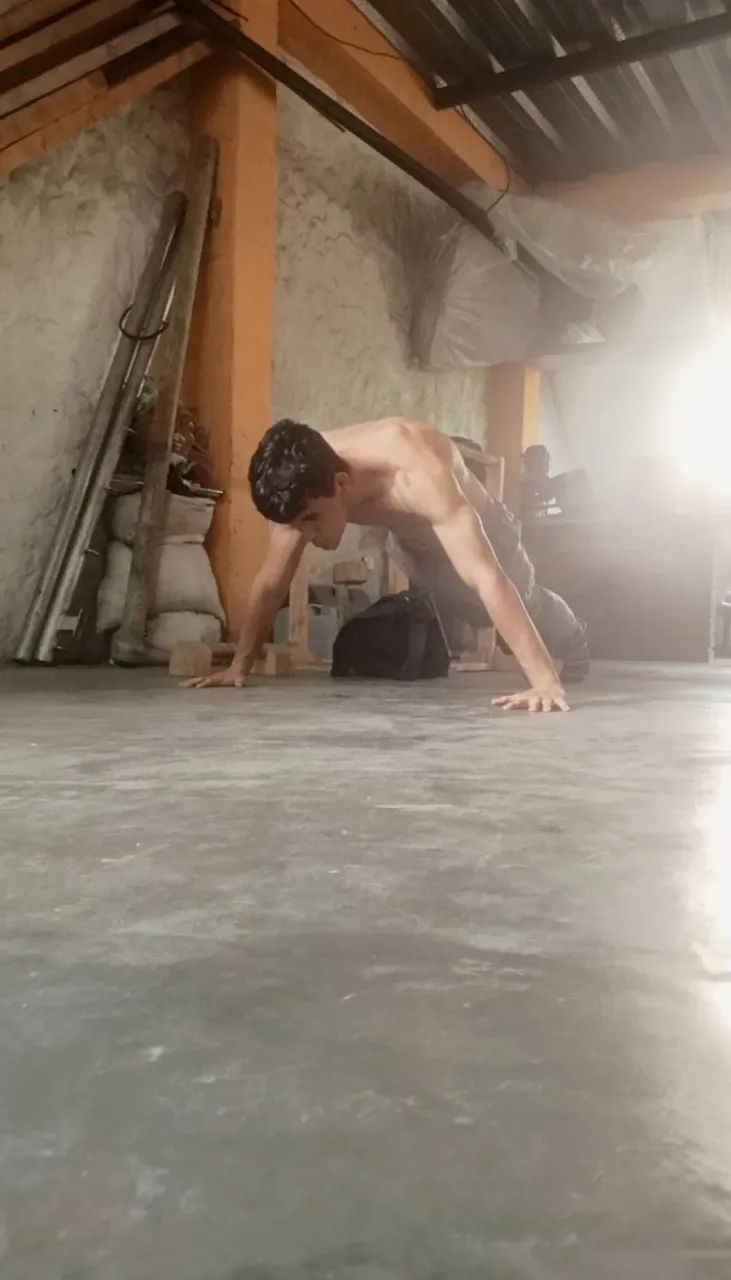
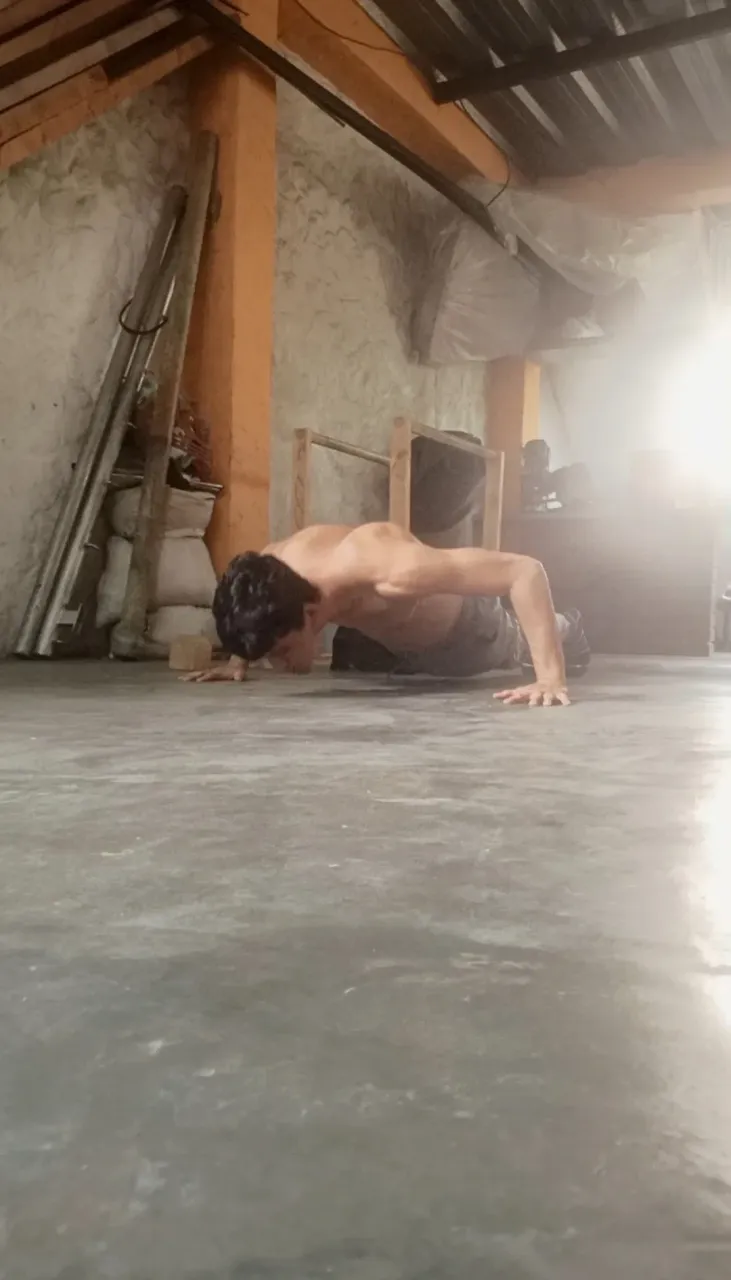
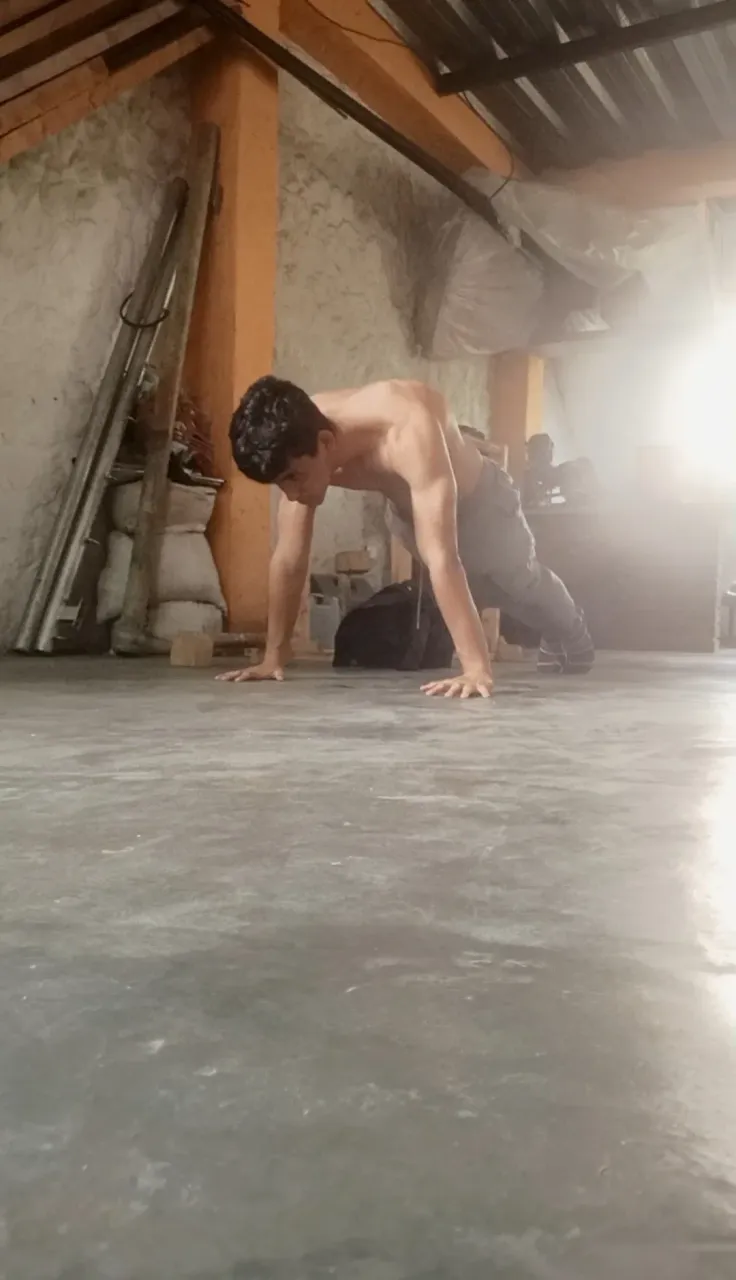
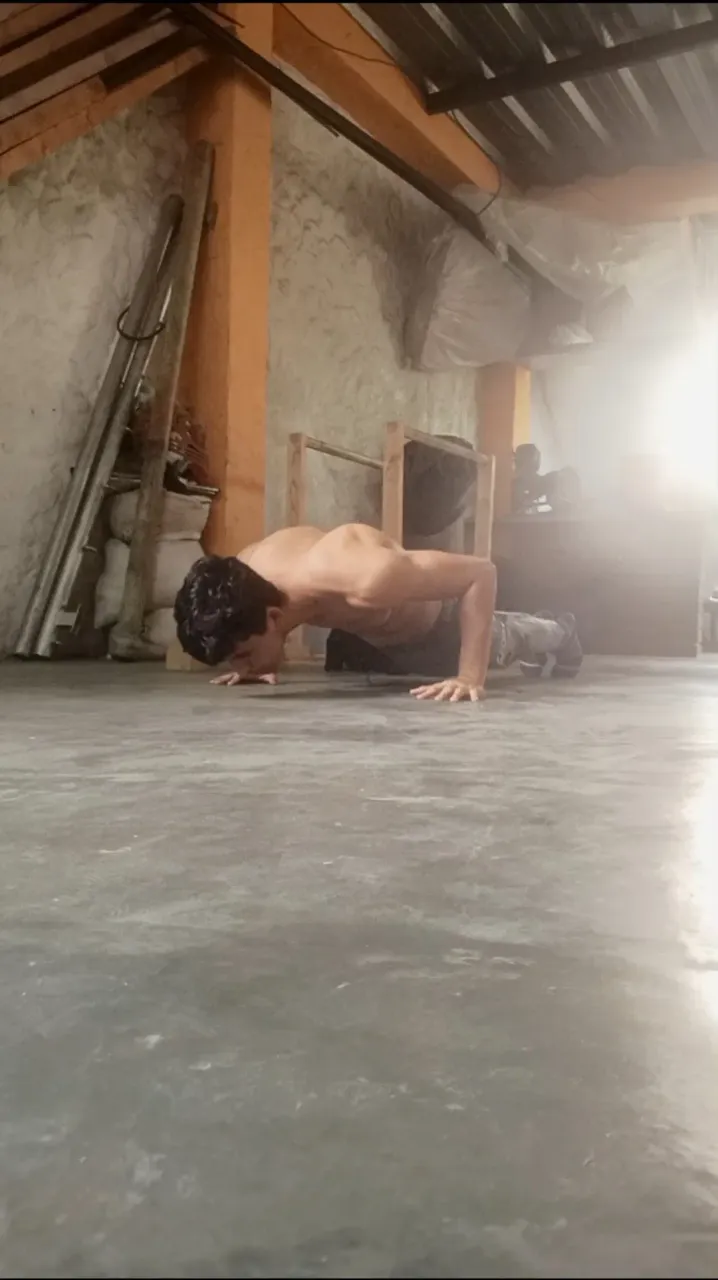
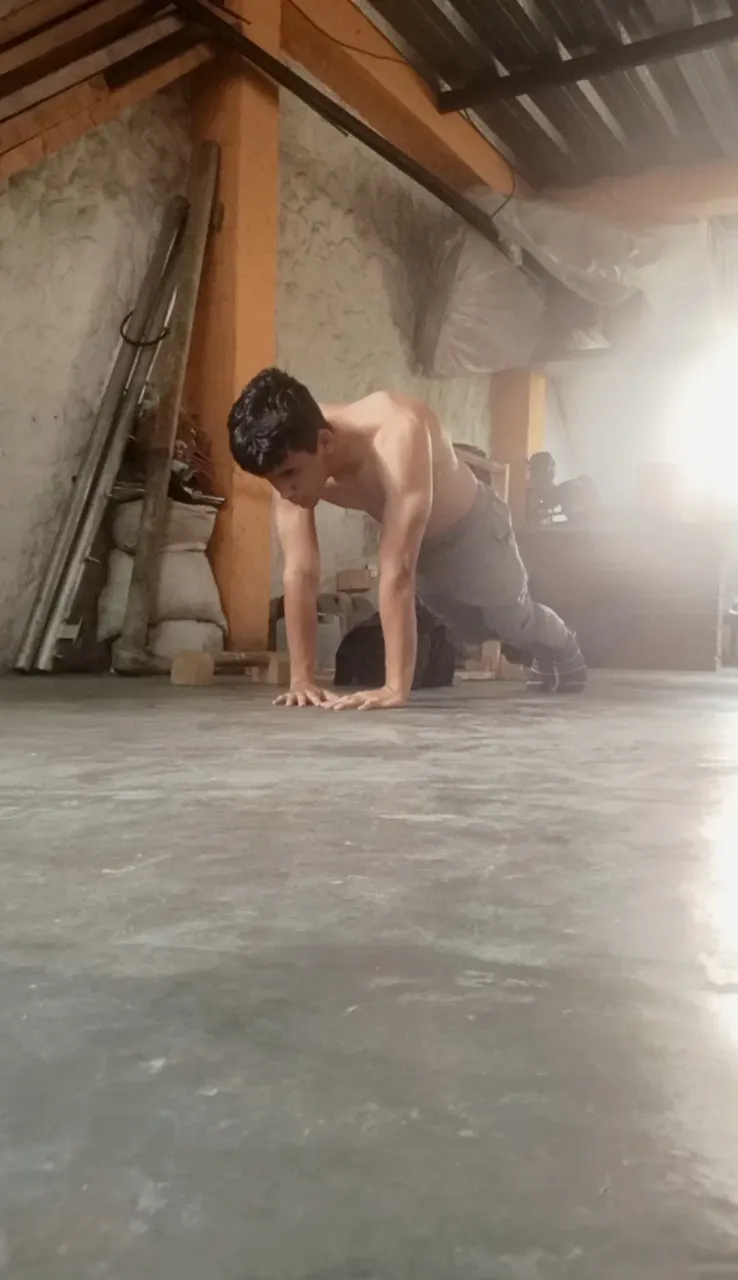
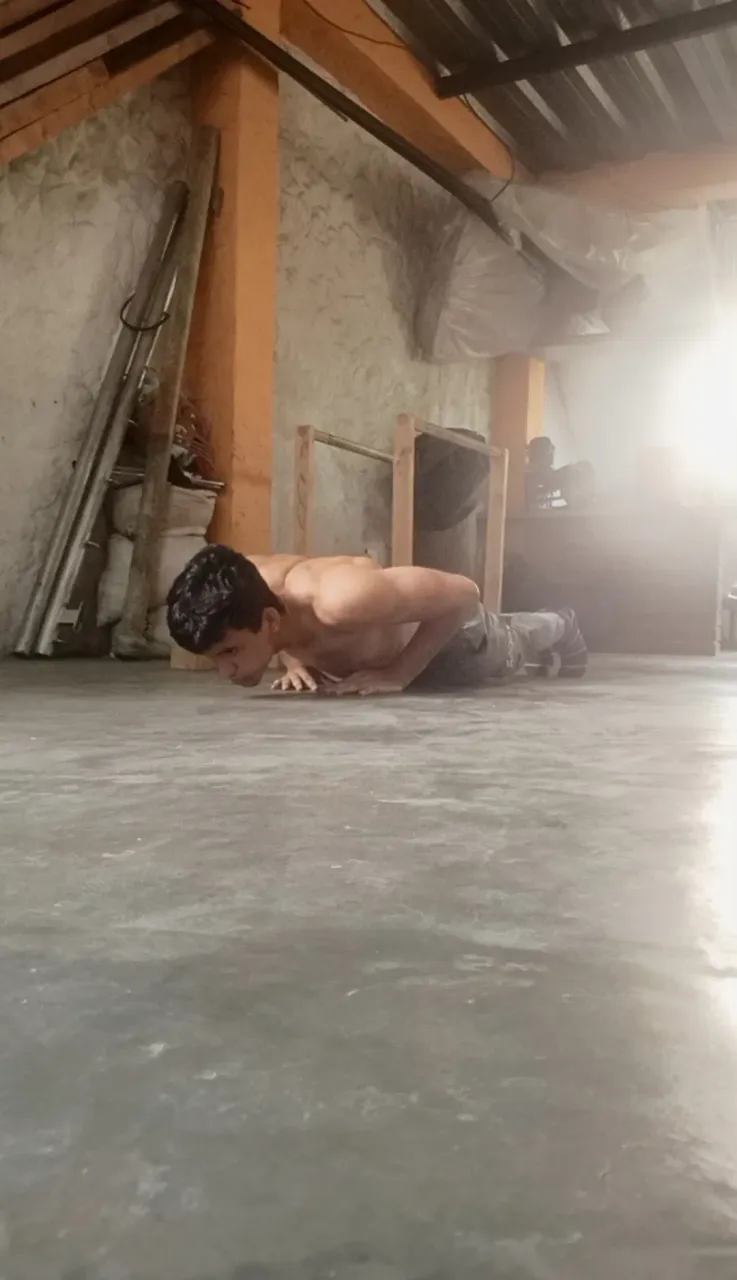
ESPAÑOL 🇪🇸
Un enorme saludo a todas las personas dentro del ecosistema de #Hive y a todos mis compañeros en #swc, en la publicación de hoy les voy a hablar sobre las flexiones, como conseguirlas y qué músculos trabaja esta misma.
Antes de esto primero debemos saber, ¿Qué es una flexión? Una flexión es un movimiento en el que flexionas los codos para acercar tu cuerpo al suelo. Aunque la versión más conocida es la flexión de brazos tradicional, existen muchas variaciones que permiten trabajar diferentes músculos y adaptarse a distintos niveles de condición física, ahora sabiendo esto, ¿qué tan importante son? Las flexiones de brazos son un ejercicio fundamental en el mundo del fitness y la calistenia, y por buenas razones. Su sencillez y efectividad las convierten en un movimiento básico que puede ser incorporado en cualquier rutina de entrenamiento, ayudándote a conseguir fuerza y resistencia trabajando músculos como el pecho, tríceps y hombros, aunque también involucran otros músculos estabilizadores como los del core. A nivel de salud es sumamente beneficioso ayudándote incluso con la postura, ya que un core fuerte, desarrollado gracias a las flexiones, te ayudara a una mejor postura y alineación corporal, tengamos en cuenta que las flexiones son un ejercicio muy versátil existen innumerables variaciones, lo que permite adaptar el ejercicio a diferentes niveles de condición física y objetivos. ¿Y como consigo una flexión? Esta pregunta es para las personas que les falta fuerza para realizar tu primera flexión, o si bien ya la tienen aumentar la cantidad de estas mismas, y para lograrlo debes fortalecer los músculos involucrados, flexiones inclinadas y flexiones con un apoyo en la pared son los ejercicios que recomiendo si aún no consigues una flexión completa, a medida que ganas fuerza puedes ir quitando inclinación para que la dificultad aumente y así puedas ir progresando mediante más te acerques a la flexión convencional.
Ese sería todo, muchas gracias por leer mi publicacion, espero tengan un excelente día hasta luego.
ENGLISH 🇺🇸
A huge greeting to all the people within the #Hive ecosystem and to all my colleagues in #swc, in today's post I am going to talk to you about push-ups, how to get them and what muscles they work on.
Before this we must first know, What is a push-up? A push-up is a movement in which you bend your elbows to bring your body closer to the ground. Although the best known version is the traditional push-up, there are many variations that allow you to work different muscles and adapt to different levels of physical condition. Now knowing this, how important are they? Push-ups are a fundamental exercise in the world of fitness and calisthenics, and for good reason. Their simplicity and effectiveness make them a basic movement that can be incorporated into any training routine, helping you gain strength and endurance by working muscles such as the chest, triceps and shoulders, although they also involve other stabilizing muscles such as the core. At a health level, it is extremely beneficial, even helping you with your posture, since a strong core, developed thanks to push-ups, will help you achieve better posture and body alignment. Let us keep in mind that push-ups are a very versatile exercise, there are countless variations, allowing the exercise to be adapted to different fitness levels and goals. And how do you do a push-up? This question is for people who lack the strength to perform their first push-up, or even if they already have it, increase the amount of these, and to achieve this you must strengthen the muscles involved, inclined push-ups and push-ups with support on the wall are the ones Exercises that I recommend if you still do not achieve a complete flexion, as you gain strength you can reduce the inclination so that the difficulty increases and thus you can progress as you get closer to the conventional flexion.
That would be all, thank you very much for reading my publication, I hope you have a great day see you later.

EDITION DETAILS
Translator: Translate Google
Photo editor: picsart
 |  |  |